Not to state the obvious but we do live in an alarmingly digitized world. Everywhere you look, it’s AI this and AI that. As journalists, media persons often report on the latest technological advancements, research breakthroughs, their applications and so on. But even as they stand on the periphery, it’s time to acknowledge that they’re actually in the midst of the digital overhaul themselves. In probably the first of its kind, IIIT-H conducted a 2 day-long workshop on AI especially for journalists.
The workshop aimed at simplifying and explaining some of the basic concepts of AI while looking at its use cases across various fields, including Journalism. Several senior editors and correspondents from leading publications and media houses across India attended the workshop.
Prof. P.J. Narayanan in his inaugural address explained that one way to reach out to different sections of society to educate them about AI, was to achieve it via educating the media. While acknowledging the strength of the institute in all fields of AI, he said that this (workshop) would help in reducing the misconceptions that people carry in their minds about AI. He added, “We would try to reach even other fields to educate them about AI and its advantages. So these seminars would mostly concentrate on what AI has achieved so far and to what point AI can reach.”
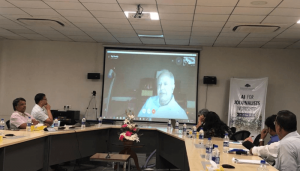
Laying The Context
Turing award winning computer scientist and Chairman of IIIT-H’s Governing Council Prof. Raj Reddy, set the tone of the workshop at the inaugural session by speaking about the world being created by computers and its implications.
Prof. P J Narayanan kicked off the series of lectures by tracing the evolution of machines from the industrial revolution to the digital revolution in the money and banking sphere and other Government-led citizen services. Terming AI as another addition to the types of intelligences – perceptual, language, social and cognitive – that evolve as a child grows into an adult, Prof. PJN chronicled the methods used in AI over the years. Where once hand-designed representation and reasoning was used to encode data, it has moved even beyond mere machine learning to now deep learning requiring huge amounts of data and computing capabilities. For all the concerns about accountability and transparency of AI, loss of privacy and replacement of humans, he advocated caution in dealing with its unsavoury side. Finally he concluded by remarking that AI must not be left to only techies and urged people from the Social Sciences to get involved too. Dr. C V Jawahar, Head of the Centre for Visual Information Technology (CVIT) and Dean (R&D) made an attempt to demystify modern AI. With some examples of AI applications originating from research out of CVIT such as a city-scale road audit system that locates potholes and water logging, to sports analytics, Prof. Jawahar also put the spotlight on the latest buzz at the 2019 IEEE Conference on Computer Vision and Pattern Recognition (CVPR): Inverse Cooking – an AI technique that uses food images to generate recipes. While discussing trends on why AI is becoming more popular now, he showcased applications in the real world, from driverless cars to robot-assisted surgeries. Leaving the session open-ended for highly-interactive discussions on the other face of AI, he concluded with insights gained from studies indicating biases in automated systems.
Applications of AI
Health
One of the significant advances of AI is in the healthcare space. Dr. Radha Rangarajan, Head, Innovation and Strategy at the Ojas Medtech Incubator spoke about how AI uses both structured and unstructured data in the healthcare context from medical notes, recordings from electronic devices, physical examinations, to clinical laboratory reports and images to learn features. Giving examples of FDA approved algorithms, she spoke about how AI is useful in drug discovery and how it can speed up drug development. To whether AI could replace a doctor, she said it would only help them make better decisions by prioritizing case load, recommending the appropriate diagnostic tests and so on. But she added that areas such as Radiology would probably see the greatest churn with algorithms providing more accuracy. Ramesh Loganathan, COO and Prof. Co-Innovation spoke about Ojas, and how the need to set up a dedicated medtech incubator was felt with a rising number of startups in the medical sphere.
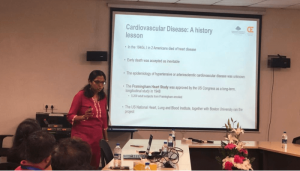
Rural and Urban Habitat
There was a combined session on AI uses in the habitat, that included agricultural land, urban areas and issues plaguing them. Prof. P. Krishna Reddy from the IT Centre for Agricultural Research flagged it off by talking about data science based systems to provide agricultural advice to farmers. He listed out two such tools – eSagu, an agro-advisory system that works at the farm as well as the village level by using coloured photographs of the crops, and Crop Darpan, a smart-phone based application that serves as a crop diagnostic tool for farmers. From the Research Lab for Spatial Informatics, Dr. K S Rajan spoke about managing crowds effectively through the deployment of smart CCTV cameras, citing the example of its use in resource management and mobilization during the last Godavari Pushkaralu (in Andhra Pradesh). He also described a unique and prize-winning road monitoring system they developed that used smartphones as a data collection platform. Speaking about the applications of AI and ML in building energy efficiency, Prof. Vishal Garg from the IT Centre for Building Sciences demonstrated the use of eDoT- an early Design Optimization Tool where one can input certain parameters such as floor area, location, specify controls for daylight or internal blinds and receive output in the form of various recommended strategies that could be useful in the early design stages of any architectural project. He went on to describe smart power strips with a device identification capability that can be used for efficiently monitoring and controlling plug loads, thereby resulting in reduction of losses and better load prediction.
Language, Speech and Journalism
If you’re wondering what language has to do with AI, then Prof. Dipti Misra amply demonstrated how with the proliferation of devices around us, natural language processing fits in with respect to smartphones, smart cars, virtual assistants and more. With 22 scheduled Indian languages, one of the major goals of the Language Technologies Research Centre (LTRC) is to develop technologies to overcome barriers to language. Showcasing applications across domains such as Agriculture, Healthcare, Education, News, Tourism and so on, Prof. Misra spoke about how LTRC is engaged in efficient dialogue systems, sarcasm detection and more in an effort to make machines sound and respond just like humans.
Speaking about the work undergoing in the Information Retrieval and Extraction Lab, Prof. Vasudeva Varma listed out various technologies used in computational journalism. He put the spotlight on work close to the journalists’ heart such as automatic commentary or news generation from videos, news translation, news summarization, detection of fake, weird and bizarre news, as well as news recommendation and summarization. He rounded off his talk by demonstrating how the Fake-o-Meter tool developed by them overcomes current limitations of existing content verification solutions.
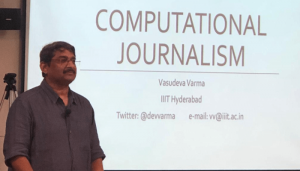
Implications of AI to the workforce
Day 2 of the workshop began by looking at artificial intelligence from the socio-economic perspective. Dr. Radhika Krishnan from the Centre for Exact Humanities laid the ground for discussions to follow by sharing the McKinsey and Nasscom reports on percentages of jobs affected by the advent of AI across various sectors and domains. One way to remain relevant in these times is to invest in reskilling or acquiring new skill sets, she said. Prof. Nimmi Rangaswamy, anthropologist, Social and Human Applications for AI (SAHAI), shared her findings from a contextual study of work automation in the Quality Testing and Assurance space. With IT testing as predictable and banal as it can be, it is a sitting target for automation. She discovered that testers needed to upskill themselves constantly or reskill in the form of developers. She however argued that there were certain limits to automation from an ethical standpoint as well as in cases where creativity was needed. According to her, the way forward is to create a stronger feedback between development and testing and move from automation to creation.
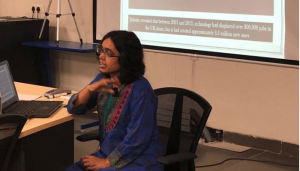
The Tech Behind Machine Learning
To explain how algorithms work today, Dr. Prasad Krishnan from Signal Processing and Communications Research Centre (SPCRC) went back into time to Claude Shannon, popularly known as the “father of Information Theory”. He took us through a video where Shannon created the first mechanical mouse and trained it to navigate through a maze. Dr. Santosh Nannuru continued by explaining how Mathematical concepts existed in the Signal Processing and Mathematical domains for a long time. But with the availability of data, it is now used in AI. Such algorithms are used in signal processing for echo-cancellation in mobile phones and other devices.
Blockchain
In a lively presentation bordering on the philosophical, Dr. K. Srinathan from Centre for Security, Theory and Algorithmic Research (CSTAR), spoke at length on the attributes of truth vs. those of machines concluding that they are diametrically opposite in nature. Deriving 3 famous fields such as Distributed Computing, Cryptography, and Game Theory, he remarked that these fields will lead to pseduo-truth. Without getting into the nitty-gritties of the specifics, he gave an overview of how disruptive cryptocurrency and bitcoin technology is, while steering clear of controversial statements about the Govt’s stand of criminalizing cryptocurrency.
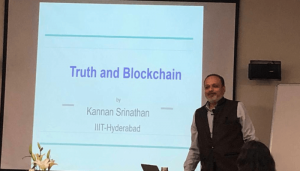
Showcasing Startups
If IIIT-H is here, can startups be far behind? Prakash Yalla, Head of the Technology Transfer Office anchored this segment by having 6 emerging startups demo their respective products. Two of the startups had solutions with far-reaching implications for the immediate audience – Digitalee, with an array of solutions for media such as an authentication solution, a tech summarization solution and a content cross-purposing solution. Mashinga, a speech-to-text solution highlighted its superiority in being able to detect Indian English more accurately with its data-driven models and demonstrated its use in a variety of domains including healthcare. Subtl showcased a complex automated question and answer system which uses a combination of natural language processing, information retrieval, document extraction and summarization. It has a multitude of use cases across industries such as the banking and financial sector, education, healthcare and defence. DreamVu, a computational optics company demonstrated its omni-stereo camera with 360 degree views that aims to disrupt the human vision and computer vision markets. Using AI in the rehabilitation sphere is Soujhe Innovative Healthcare Devices. They’ve come out with smart, wearable solutions to assist patients suffering from stroke, spinal cord injuries, brain injury, frozen shoulder and so on. For the sports enthusiasts, Match day has a solution that works on uploaded sports videos, segmenting them and generating reports that can assist in player tracking and analysis. These startups reveal the culture prevalent at IIIT-H: some of them are the outcome of collaborative research in the labs with the students and professor deciding to start up, others are the result of IIIT-H’s research attracting interest from existing entrepreneurs, and still others have taken off from an internship at Product Labs.
Round table of Thoughts on Future of Journalism
As a former journalist and current Editor-in-Chief of Veooz Labs, an algorithmic platform that curates a mix of stories to subscribers, Chitti Pantulu ably moderated the last segment. Incidentally, Veooz was also the first startup that was born out of IIIT-H. Participants were invited to discuss what AI portends especially for journalists. Chitti began by listing 3 macro-trends for Indian media in particular: 1) The bottom lines of newsrooms are under pressure and they are rationalizing manpower and trying to cut costs. 2) The demographics in the media industry is changing: Youngsters are moving into more lucrative career options such as PR and so on rather than journalism. 3) Disintermediation of information dissemination: With the virality of social media, print publications are getting sidelined. With MNCs setting up newsrooms, the relevance of media as we know it, is under a question mark. Where once the TV dictated the content of the newspaper, today it is Twitter or FB.
Speaking for himself, Chitti said that the news editors job has almost become redundant with algorithms processing twice or thrice the amount of information. In fact, segmentation of content is also done automatically. Large publishing houses in India are yet to hop onto the AI bandwagon and he said that we are at least 5 years away from AI replacing humans in journalistic tasks. Aniket remarked that AI was envisioned to do away with repetitive and mundane tasks. And yet we see jobs in the creative sphere like those of the news editors getting automated. Similarly we see AI in jobs requiring precision and high skills such as those of surgeons. The discussion centred around how much an algorithm can really understand. It will likely push one into an echo-chamber and for news values and creativity, we still need to go back to traditional journalists. The question of monetization in the digital platforms was brought up by a participant. The truth is that none of the Indian digital platforms are making money because no reader is willing to pay for such content unless it is very niche.
The upside to AI implementation is that it typically needs more manpower than what one thinks. Some journalists pointed out the redundancy of having a stock reporter to report on the highs and lows of the market each day. An automated process in such cases as well as in those related to companies’ earnings statements will benefit editors. For cases of investigative journalism where years of data needs to be crunched to see trends and make accurate analysis, again an automated process will help. It was widely acknowledged across the table that content is not king anymore but that SEO (search engine optimization) is king! Quoting Steve Jobs’ “The user doesn’t know what he or she wants”, Chitti drew a parallel to the reader who skims through news articles. An automated reportage is leading publishing houses to push what interests readers and not necessarily what is in the interest of the public. AI in the newsrooms (in India) will take a while but there is immense potential for automatic cataloging, selection and automatic captioning of pictures for associated articles. To conclude, Chitti said that as a journalist, one needs to retrain and acquire new skill sets, such as Python or a scripting language. This will enable the writer to process data to write out stories.
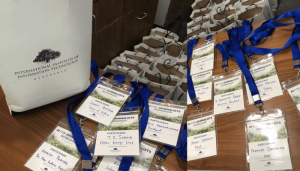

Sarita Chebbi is a compulsive early riser. Devourer of all news. Kettlebell enthusiast. Nit-picker of the written word especially when it’s not her own.

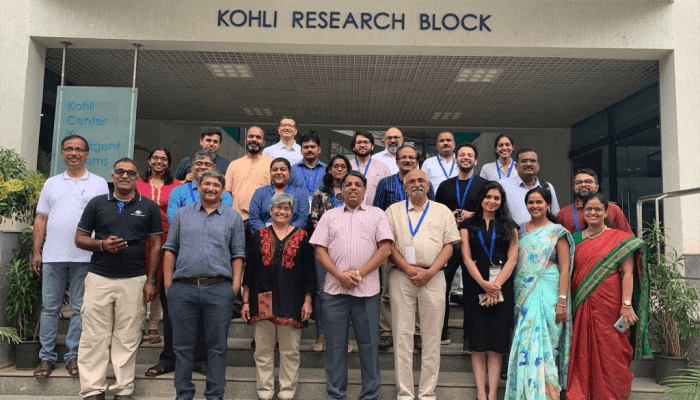
Next post